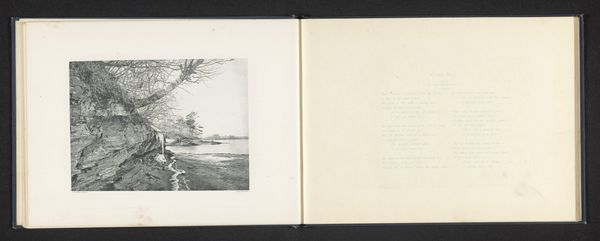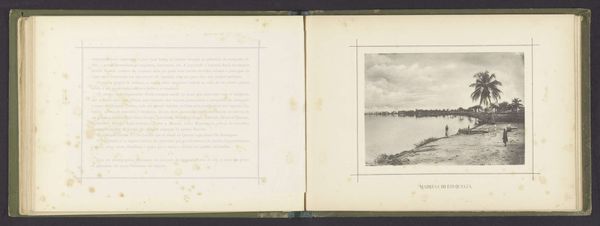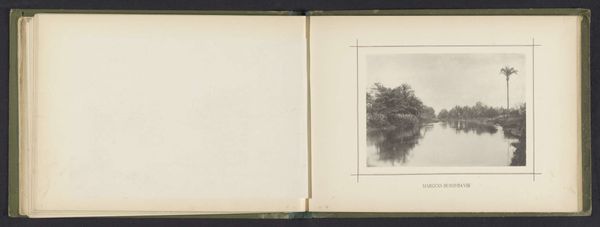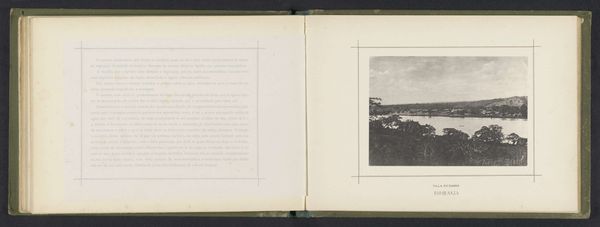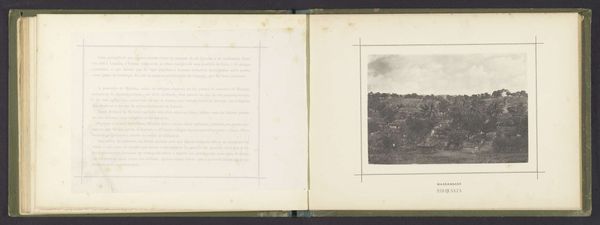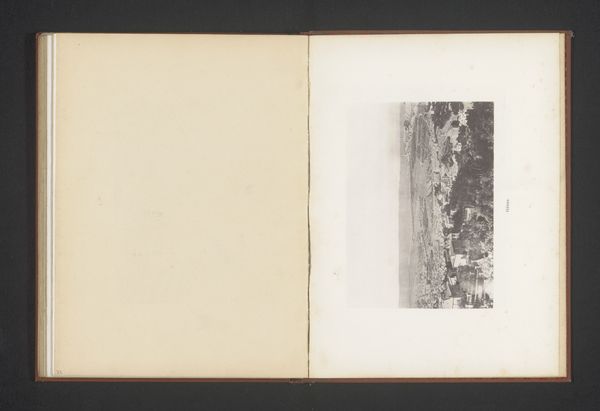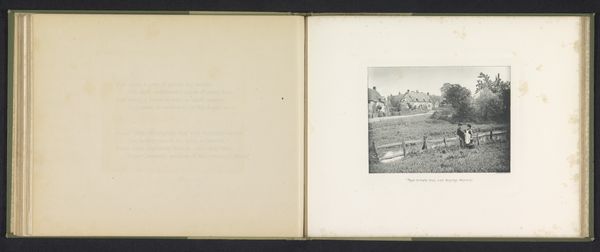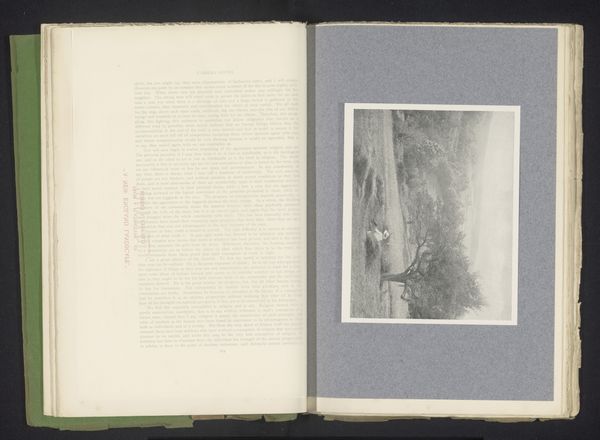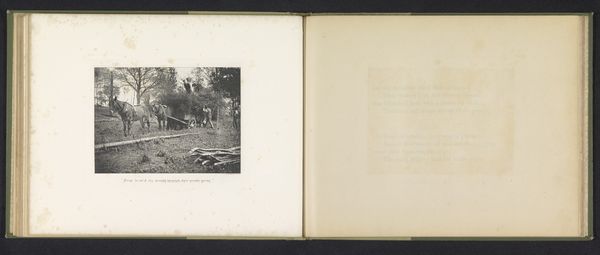
photography, albumen-print
#
landscape
#
river
#
photography
#
albumen-print
Dimensions: height 114 mm, width 164 mm
Copyright: Rijks Museum: Open Domain
Curator: This photograph is titled "Gezicht op de rivier Cuanza," or "View of the Cuanza River." It's an albumen print from before 1886, created by José Augusto da Cunha Moraes. Editor: The immediate impression is one of stillness, almost like looking at a reflection caught in glass. The way the light plays on the water and those horizontal lines… it's quite arresting. Curator: Certainly. Da Cunha Moraes's work gives us insights into Angola's colonial history. The river, a vital artery for commerce and governance, becomes a stage for projecting power. What we see here isn't just a landscape, but a claim of ownership. Editor: I see what you mean, and that reading comes through especially clearly. The placement of the building relative to the vastness of the landscape seems designed to suggest permanence, and also something imposing—the formal composition underscores a social hierarchy at play here. I also note how the tonality accentuates textures. The foreground vegetation adds layers. Curator: Precisely. Photography in the colonies was a tool for documentation but also propaganda. These images would circulate back to Europe, reinforcing ideas of colonial order. Look closely—you will observe how human presence is controlled, subservient to nature in its tamed manifestation, yet it also displays a kind of civil order by its composition. Editor: Do you feel that contrast works here in this work specifically, or rather clashes given its tonal register? The near monochrome washes some details and highlights others in a confusing manner. But then the horizon almost acts as a unifying principle to all three zones present - landscape, town and water. Curator: Perhaps Da Cunha Moraes consciously embraced certain techniques precisely for their visual ambiguity to appeal simultaneously to divergent European audiences. He shows mastery and willingness to compromise depending on the expectations. Editor: A pragmatic but somewhat uninspired approach in my book; nonetheless this offers new dimensions into interpreting his process, given his place of provenance. Well, thank you for illuminating these critical dimensions in Moraes' photograph, certainly making my understanding much more thorough. Curator: My pleasure. These early photographs can unveil unseen histories.
Comments
No comments
Be the first to comment and join the conversation on the ultimate creative platform.

